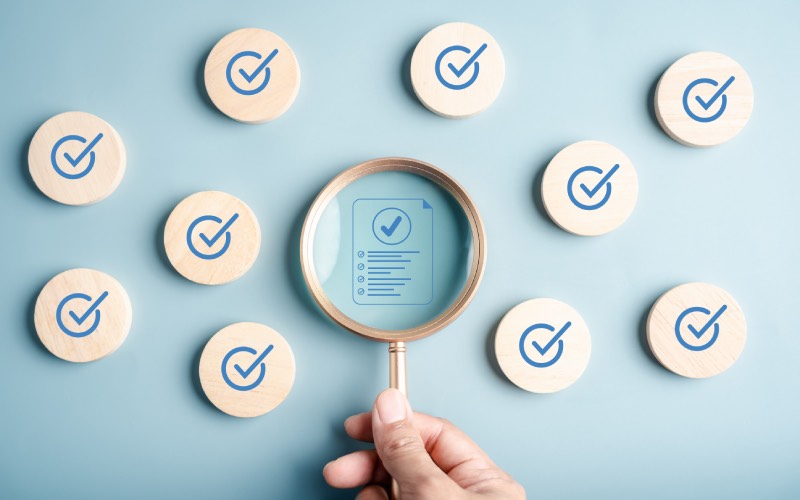Key Takeaways
- Effective data governance enables organizations to reduce risks, strengthen compliance, and drive innovation through clear data quality controls and oversight processes.
- Organizations that implement data governance best practices build trust in their data assets and create sustainable competitive advantages.
- Industry-specific data governance approaches help companies navigate unique regulatory requirements while maintaining agility.
- Continuous learning and skill development empower teams to launch, maintain, and evolve successful data governance programs.
Data Governance Best Practices Matter Now More Than Ever
Organizations face mounting pressure to govern their data effectively, especially as employees rapidly adopt generative AI tools for daily work – often without proper oversight. This so-called shadow AI usage creates significant data security concerns, data privacy risks, and regulatory exposure under laws like the EU’s General Data Protection Regulation (GDPR) and the California Consumer Privacy Act.
DATAVERSITY’s Trends in Data Management (TDM) Report highlights this growing issue. Over 60% of survey participants identified data quality as their top data management concern, while 48% pointed to insufficient data governance as a major obstacle. According to John Ladley, a recognized data management advisor and advocate:
“AI engines are fundamentally about using data, which requires proper controls and oversight. When you examine the core challenges with AI, you’ll find that data quality is at the root of most problems.”
While poor data quality and inadequate context remain fundamental data governance challenges, organizations don’t need to remain stuck in an enterprise data governance rut. By understanding how to implement proven data governance best practices and building practical experience, teams can transform reactive data governance into a strategic advantage that delivers measurable data governance benefits.
Data Governance Bootcamp
Learn techniques to implement and manage a data governance program. (Use code Cyber2025 to save 25% through December 8, 2025!)

12 Essential Data Governance Best Practices
Implementing a successful governance program requires embracing data governance best practices and adapting them to new situations.
While proper controls and oversight form a fundamental aspect of data governance, they need to support innovation and technical advancement too. The best data practices listed below balance both kinds of requirements.
1. Map Out the Data Strategy
Too often, business leaders who initiate a data governance program assume that the latest data governance tools will automatically provide better data quality and business value. So, they purchase a data platform and set up operations around it.
Instead, developing the data strategy – the north star that leads to the return on investment (ROI) – ends up more effective. This guidance needs to be customized to agree with the business and grow as it evolves.
2. Invest in Continuous Training
Continuous training forms the foundation for successful data governance by getting everyone aligned on processes. Organizations need certified data governance professionals to navigate complex challenges like protecting privacy in AI projects and maintaining regulatory compliance.
As demonstrated by Delta Dental of Michigan, implementing AI governance best practices through ongoing training ensures teams can adapt to evolving data requirements. Regular training helps organizations build data literacy and internal expertise on data practices across teams.
3. Get Leadership Support
In our research, we found that 44% of survey participants identified the role of a data governance lead as being responsible for driving data management in the organization. While a data governance lead does direct how people organize and respond to incoming data on the ground, executive buy-in is necessary.
Senior managers sponsor and allocate funding for data governance activities, so they need to have a baseline understanding of data governance concepts and practices. Robert S. Seiner, principal of KIK Consulting & Educational Services, explains:
“If you don’t have senior leadership sponsorship and understanding of your data governance program, your program is going to be at risk. Some other shiny object, some other sexy project, will come along and will steal the thunder from data governance.”
4. Conduct a Maturity Assessment
A data governance maturity model can be valuable for organizations to evaluate their current state and develop an effective data governance framework. Firms know what capabilities exist and what data governance areas need development to get that ROI.
The process of conducting a maturity assessment and communicating the results aligns teams on strengths and gaps, and informs which goals are realistic. As organizations evolve, they will require updated maturity evaluations.
5. Leverage Existing Resources
Maturity assessments uncover where companies are using existing resources to govern data. As Seiner emphasizes, this non-invasive approach typically gains more traction.
Rather than building “something brand new from scratch,” Seiner suggests formalizing what exists and “embed governance into existing projects and processes.” For example, if team members are already defining, producing, and using data, recognize them as data stewards or data owners.
6. Assign Roles and Responsibilities
Increased understanding and agreement about data governance roles and responsibilities underlies trust in data governance processes. Seiner describes four tiers of roles and responsibilities: executive, strategic, tactical, and operational. Senior leaders may form a data governance committee (also called the data governance council) to develop and oversee data policies and the data management process.
While businesses may change depending on which resources and structures are available, they must adapt roles to ensure adequate data quality management and control. Both are central to successful data governance and generative AI.
7. Develop a Data Governance Framework
In addition to roles and responsibilities, data governance requires a larger collection of processes, rules, and responsibilities to work. This data governance framework ensures regulatory compliance and establishes data standards to synchronize activities across an organization. A framework typically includes decision rights, accountability structures, and escalation paths for data-related issues.
A data governance policy comprises an important part of a data governance framework. It provides guidance to data governance teams on best practices, ensuring the data integrity and quality needed for and from generative AI projects.
8. Treat Data Governance as a Service
Organizations succeed when they establish data governance as a service, rather than as a technology initiative or compliance burden. Kelle O’Neal, founder and CEO of First San Francisco Partners, suggests thinking of data governance as “another capability in an organization, just like human resources, finance, or facilities.”
Like these other departments, effective data governance supports the entire business while maintaining consistent standards and practices – providing templates, tools, policies, and processes to support how data is created, managed, used, and shared.
9. Manage Cultural Change
Even organizations with robust data governance platforms can fail without effective cultural change management. At CPS Energy, data stewards initially struggled to balance governance tasks with their existing business roles until the organization implemented a clear change management strategy.
Through consistent trust and transparency in communications and decision-making, CPS Energy successfully transformed resistance into engagement and built a modern data culture.
10. Choose Smart Metrics
Organizations use data governance metrics as a tool to understand how their data governance program works and supports the ROI. Governance metrics also demonstrate reliable data controls and regulatory compliance.
Key performance indicators (KPIs) can be used to monitor and measure governance success. These measurements will evolve as data governance services take on new programs or as priorities shift, connecting business goals with governance initiatives.
11. Start Small with Common Business Priorities
Start small with common business priorities when enacting data governance. This means taking a step-by-step approach. Says O’Neal:
“Rather than boiling the ocean, think globally and act locally. Understand the big picture, identify some starting points in which data governance can engage and provide value, and then expand incrementally.”
Organizations should begin with manageable projects that align with their data strategy, such as standardizing data definitions for a specific business unit or establishing a focused data catalog. As these initial efforts succeed, teams can broaden their governance approach while incorporating lessons learned into next-generation practices.
12. Iterate and Improve
Data governance is never a finished project. It must continuously evolve to address emerging technology, changing data privacy regulations, and new market conditions.
For example, a high adoption of generative AI tools in 2024 required data governance practices to ensure adequate data quality as inputs to and outputs from these models. Increasingly, this work is tied in with AI governance, to ensure ethical data usage and content creation.
CDMP Certification and the DMBOK Learning Plan
Train to get certified as a data management professional. (Use code Cyber2025 to save 25% through December 8, 2025!)

Industry-Specific Watch-Points and Adaptations
Different industries require specific data governance practices to keep up with their business analysts’ needs. We have captured these nuances below.
| Industry | Critical Practice | Regulatory Driver | Real-World Example |
| Banking/Finance | Choose smart metrics and apply them to real-time data. | Complex regulatory framework requires risk management and reporting. | American Express |
| Insurance | Conduct a maturity assessment to develop an objective view of current capabilities. | Siloed information results from decentralized regulation happening at the state level. | Property and Casualty Insurance Carrier |
| Healthcare | Iterate and improve existing data governance metrics to demonstrate data protections. | HIPAA compliance demands data privacy and accessibility with permissions. | Delta Dental of Michigan (DDM) |
| Government | Use an incremental approach to data governance, starting with a simpler project. | More countries are implementing generative AI guidance and legislation. | Canada’s Department of Fisheries and Oceans |
| Utilities/Energy | Manage cultural change for trust and messaging. | Utilities and energy companies face rapid demands for service and limited governance resources. | CPS Energy |
| Retail | Develop a data governance framework to evaluate potential governance solutions. | Retail companies need security controls and provide transparency to align with consumer regulations. | Abercrombie & Fitch |
Turn Best Practices into Daily Wins – Starting Now
Data governance can drive success in AI implementation, regulatory compliance, data security, and data quality initiatives. To succeed, effective programs require strong controls and oversight that align directly with business strategies and operations.
Investing in data governance courses and following best practices – from developing the data strategy and gaining executive buy-in to creating a governance framework and following an incremental approach – will ensure that a governance program remains sustainable, relevant, and effective.
Applied Data Governance Practitioner Certification
Validate your expertise – accelerate your career. (Use code Cyber2025 to save 25% through December 8, 2025!)




